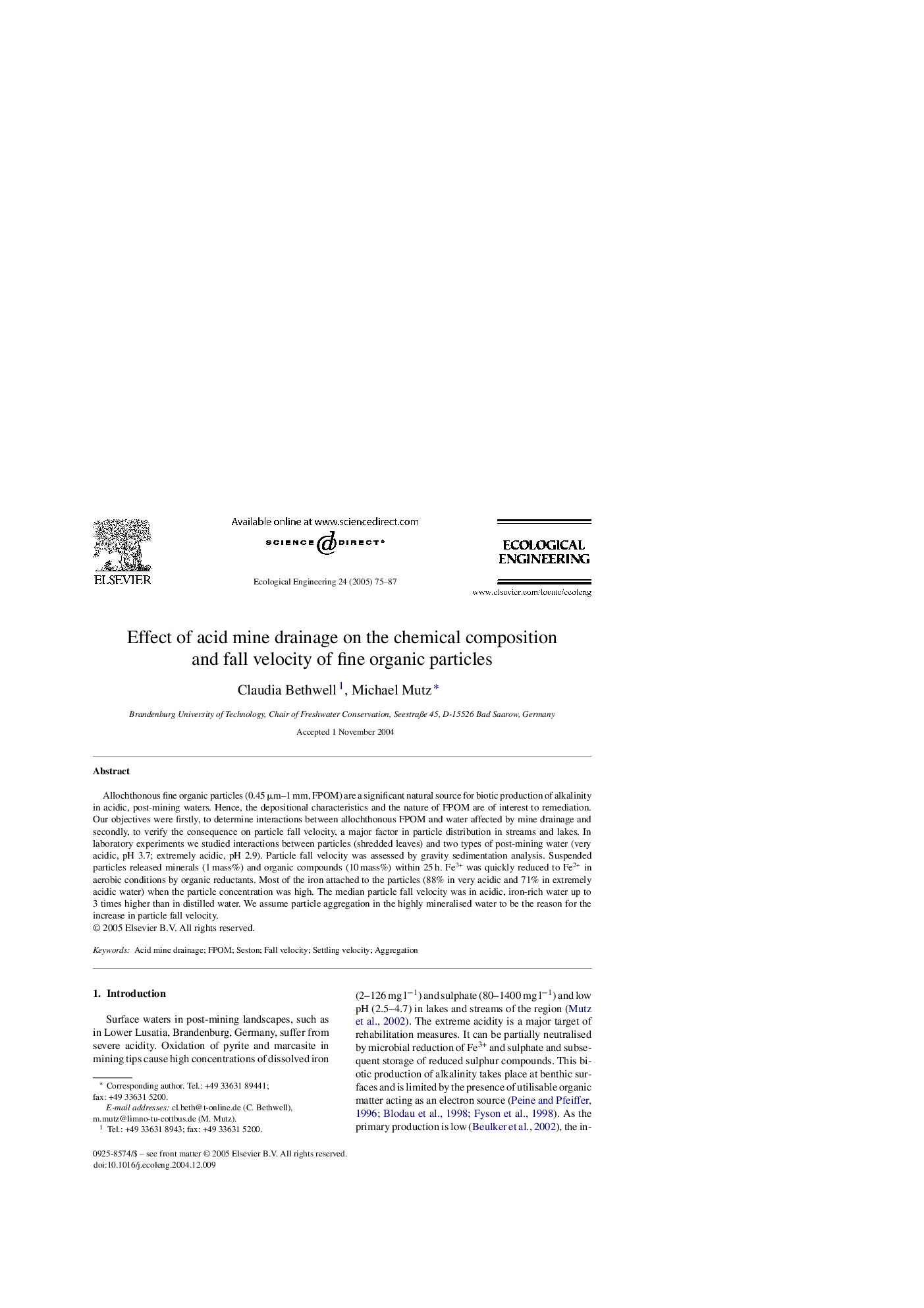| Article ID | Journal | Published Year | Pages | File Type |
|---|---|---|---|---|
| 9447415 | Ecological Engineering | 2005 | 13 Pages |
Abstract
Allochthonous fine organic particles (0.45 μm-1 mm, FPOM) are a significant natural source for biotic production of alkalinity in acidic, post-mining waters. Hence, the depositional characteristics and the nature of FPOM are of interest to remediation. Our objectives were firstly, to determine interactions between allochthonous FPOM and water affected by mine drainage and secondly, to verify the consequence on particle fall velocity, a major factor in particle distribution in streams and lakes. In laboratory experiments we studied interactions between particles (shredded leaves) and two types of post-mining water (very acidic, pH 3.7; extremely acidic, pH 2.9). Particle fall velocity was assessed by gravity sedimentation analysis. Suspended particles released minerals (1 mass%) and organic compounds (10 mass%) within 25 h. Fe3+ was quickly reduced to Fe2+ in aerobic conditions by organic reductants. Most of the iron attached to the particles (88% in very acidic and 71% in extremely acidic water) when the particle concentration was high. The median particle fall velocity was in acidic, iron-rich water up to 3 times higher than in distilled water. We assume particle aggregation in the highly mineralised water to be the reason for the increase in particle fall velocity.
Related Topics
Life Sciences
Agricultural and Biological Sciences
Ecology, Evolution, Behavior and Systematics
Authors
Claudia Bethwell, Michael Mutz,
